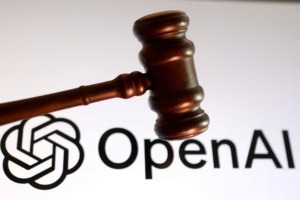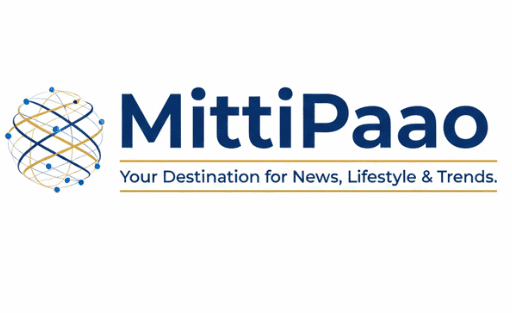The Shadow AI Crisis: How to Manage Risks from Unsanctioned AI Tools in the Workplace

The rapid deployment of generative artificial intelligence (AI) tools has created an unprecedented security challenge for organizations worldwide like shadow ai crisis. This challenge is not external; rather, it originates within the enterprise walls. Employees, eager to boost productivity, are integrating powerful AI assistants into their daily workflows without official approval. This widespread, unsanctioned use of powerful generative AI tools is known as Shadow AI. Consequently, this practice has become the single most urgent, unaddressed cybersecurity threat facing modern businesses today.
Defining the Threat: What is Shadow AI?
Shadow AI represents the newest and most dangerous evolution of a familiar problem: Shadow IT. However, the risks posed by Shadow AI are fundamentally different from those of an employee using an unsanctioned cloud storage service.
Shadow IT, historically, involved employees using unauthorized hardware or software like Dropbox or consumer project management apps. The risk primarily involved weak security and non-compliance. In contrast, Shadow AI involves tools, particularly Large Language Models (LLMs), which learn from and often retain the data input into them. Shadow AI Crisis
Fundamentally, when an employee pastes a proprietary contract, a confidential client list, or an internal strategy document into a public chatbot to summarize or refine it, that sensitive data is immediately absorbed. Furthermore, this data may then be used to train the model’s underlying algorithms. Therefore, the enterprise is effectively leaking its intellectual property (IP) and confidential information directly to a third-party AI provider, often without any contractual protection. Clearly, the speed and scale of potential data leakage associated with LLMs far surpasses anything seen with traditional Shadow IT. This reality demands an urgent, C-suite-level response and the immediate implementation of a stringent AI governance framework. Shadow AI Crisis
Top 3 Risks of Unsanctioned AI Tool Usage
Uncontrolled use of Shadow AI exposes organizations to three interconnected and catastrophic risks. These risks directly impact the bottom line, regulatory standing, and operational integrity.
Data Leakage and Intellectual Property Loss
The primary and most immediate danger of Shadow AI stems from data leakage and IP loss. This often occurs innocently. For example, an employee might ask an AI chatbot to write code, review financial figures, or draft a response to a sensitive client email. Consequently, the confidential information used in the prompt is transmitted and stored on the AI vendor’s servers. Shadow AI Crisis
Worryingly, many public-facing LLMs explicitly state in their terms of service that user inputs can and will be retained. Therefore, any sensitive information entered becomes part of the public model’s training data. This compromises competitive advantage. Furthermore, this continuous, undocumented flow of proprietary data out of the enterprise creates a massive intellectual property loss surface. Ultimately, without an officially approved and secured LLM environment, control over the company’s most valuable assets is immediately relinquished the moment an employee hits “send” on an AI prompt. Shadow AI Crisis
Compliance and Regulatory Exposure
The use of unsanctioned AI tools creates severe compliance exposure, placing the organization at high risk of penalties and legal action. Specifically, sensitive data such as personally identifiable information (PII) or protected health information (PHI) often is fed into these tools. However, this action immediately violates key regulatory mandates.
Consider this scenario: If a healthcare worker pastes patient data into an AI tool, the company may be violating HIPAA regulations. Similarly, if data belonging to European clients is processed by an unsanctioned tool, the organization could face huge fines under GDPR. Moreover, the looming EU AI Act will impose strict transparency and risk assessment requirements on AI systems used in specific high-risk areas. Consequently, if internal business decisions or financial models rely on outputs from unmonitored Shadow AI tools, the organization has no proper audit trail. Therefore, proving regulatory adherence becomes impossible. The inability to demonstrate control and transparency over AI systems represents a non-negotiable failure of governance. Shadow AI Crisis
Misinformation and Inaccurate Outputs (Hallucinations)
The third major threat involves operational risk caused by unreliable AI outputs, commonly known as “hallucinations.” Essentially, hallucinations are confidently asserted false or flawed pieces of information generated by the AI. Thus, if an employee relies on an AI tool to generate financial reports, legal clauses, or code without human validation, those outputs may be fundamentally incorrect.
For instance, an AI-generated legal summary might cite non-existent case law, or an AI-developed financial projection might include fabricated data points. Clearly, using such flawed outputs to drive major business decisions, investment strategies, or client advice is catastrophic. Furthermore, since the source of the misinformation is an unmonitored Shadow AI tool, tracing the origin of the error and correcting the subsequent damage becomes a complex, resource-draining task. In sum, the lack of accountability and auditability for AI output presents a direct threat to business integrity. Shadow AI Crisis
Building a Robust AI Governance Framework
Addressing the Shadow AI crisis requires a strategic shift from simple prohibition to intelligent, enabling governance. The solution is to build a robust and comprehensive AI governance framework.
First and foremost, IT security and executive leadership must jointly establish clear, enterprise-wide AI governance framework policies. These policies must define acceptable use. Specifically, they must categorize data types and explicitly state which data is forbidden from being entered into any external or unapproved AI tool. Furthermore, the policies should require employees to use designated, secured internal AI instances for all proprietary data handling. Shadow AI Crisis
Next, cultural education is paramount. Organizations cannot simply block access; instead, they must educate employees on the why. Shadow AI Crisis Therefore, training must focus on the real-world dangers of data leakage and the specific mechanisms by which public LLMs retain proprietary input data. Consequently, employees must understand that using these tools for company work directly violates their data security responsibilities. Ultimately, the goal is to channel the natural desire for innovation into secure, approved channels. Shadow AI Crisis
Practical Mitigation: Tools and Technical Safeguards
Policy alone is insufficient; technical safeguards must enforce the new governance framework.
First, deploy specialized AI Discovery and Monitoring tools. These tools scan network traffic and endpoint activity to identify which unsanctioned AI services employees are accessing. Consequently, IT security gains complete visibility into the scope of the Shadow AI threat. This visibility allows for targeted intervention and policy enforcement. Shadow AI Crisis
Secondly, strengthen Data Loss Prevention (DLP) software across all endpoints. Furthermore, update DLP rules to specifically recognize patterns associated with confidential data being copied and pasted into common LLM interfaces (like the API or web chat window of public AI services). Thus, the DLP system can automatically block the transmission of sensitive information to unapproved third-party AI websites. This creates a technical “airlock” for critical data. Shadow AI Crisis
Finally, implement AI Sandboxing for safe employee experimentation. Essentially, an AI sandbox is an approved, secured, and isolated environment where employees can safely test and evaluate new AI tools or models using dummy, non-sensitive data. Shadow AI Crisis. In this way, the organization can harness employee curiosity and innovation without the risk of data leakage. This strategy allows the business to rapidly vet new technologies before approving them for enterprise-wide deployment.
Turning Shadow AI into Strategic Advantage
Shadow AI represents an existential threat to enterprise data security and compliance. Nevertheless, it is also a clear signal: employees desperately need and want powerful AI tools to perform their jobs better. Therefore, the solution is not to fight the tide of innovation; rather, it is to immediately establish a secure, controlled, and well-governed ecosystem.
By addressing the urgent risks of data leakage and compliance exposure and by building a clear AI governance framework and technical safeguards, organizations can effectively turn the challenge of Shadow AI into a strategic advantage. This allows the enterprise to harness the incredible productivity gains offered by AI while maintaining absolute control over its most valuable assets. Consequently, the enterprise moves from reacting to an external threat to proactively driving secure, responsible, and compliant AI in FinTech innovation.
Discover how Artificial Intelligence is reshaping governance, risk, and core business functions in our dedicated AI Trends Hub. Explore how financial success influences leadership and culture on our Executive Lifestyle Page. Stay inspired with global economic perspectives and market entry stories in our Global Strategy Portal.
Visit our website: Bloomduke



